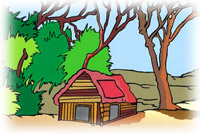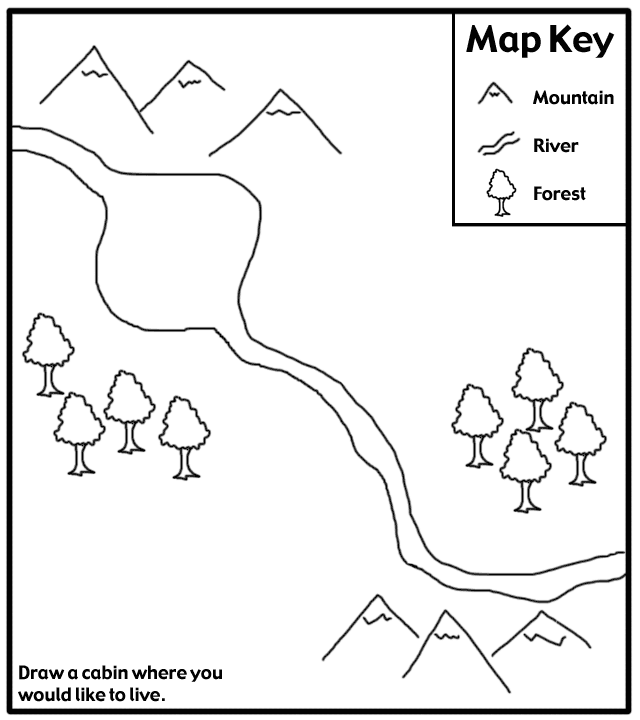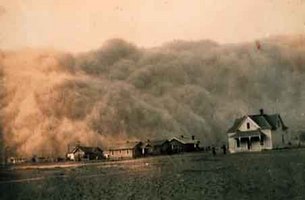Natural Resources and Human Needs- 6th Grade
Objectives and Indicators For This Unit:
6.6.A Natural Resources and Human Needs
1. Recognize and compare how different parts of the world have varying amounts and types of natural resources and how the use of those resources impacts environmental quality.
a. Identify and describe natural resources as
• Land
• Fossil fuels
• Forests
• Water
• Wind
• Minerals
• Wildlife
b. Identify and describe the distribution of natural resources around the Earth
c. Identify and describe how the natural change processes may be affected by human activities.
• Agriculture
• Beach preservation
• Mining
• Development/construction
• Stream/river alteration.
d. Identify and describe problems associated with obtaining, using, and distributing natural resources.
e. Identify possible solutions to problems associated with obtaining, using, and distributing natural resources. Vocabulary Words that must be looked up and put in your journal
Agriculture
Conservation
Erosion
Herbicide
Land dredging
Land pollution
Large scale mining
Mining
Natural resources
Nonpoint source pollution
Nonrenewable source
Pesticide
Point source pollution
Pollutants
Pollution
Recycle
Reduce
Renewable source
Reuse
River alteration
River dredging
Small scale mining
Stream alteration
Stream discharge
Suburban development
IDEAS THAT THEY MUST KNOW
§ A natural resource is a material source of wealth, such as timber, fresh water, or a mineral deposit, that occurs in a natural state and has economic value.
§ The Earth’s natural resources can either be renewable or non renewable. Renewable resources are continually recycled and replenished while nonrenewable resources require more time before they can be replaced or cannot be replaced.
§ Massive human interventions have caused the disruption of natural systems. Pollution is one of the effects of these interventions.
§ Pollution enters water from point sources and non-point sources.
§ Point source pollution is pollution that enters water from a specific location, such as drainpipes or ditches.
§ Non-point source pollution is pollution that enters a body of water from a large area such as lawns, roads, and construction sites.
§ Lawn and farm chemicals, sewage, metals, oil, and heat all contribute to water pollution.
About 16 million km² of the Earth’s total land surface is used for agriculture.
|
| ||||
|
| ||||
|
| ||||
|
|
Wendy's World- Natural Resources By Jane Runyon |  |
 1 Wendy looked puzzled. Tim and Tess knew she needed help. Wendy's class was doing a project. Wendy was pretending to be a pioneer. She had to find a good spot to start a new settlement.
1 Wendy looked puzzled. Tim and Tess knew she needed help. Wendy's class was doing a project. Wendy was pretending to be a pioneer. She had to find a good spot to start a new settlement.2 "My teacher told us to think about what a town needs," Wendy told the twins. "I'm not sure what I'm looking for."
3 "You need a place to live," suggested Tim.
4 "There won't be any houses in a new place," said Wendy.
5 "What could you use to build houses?" asked Tess.
6 "Well, if there are trees, we can build cabins," answered Wendy. "Let's look for a place with trees."
7 "Won't you need water to drink?" asked Tim.
8 "Oh, yes," said Wendy. "If I build my town near a river, I will have lots of drinking water. That would also give me a place for boats."
9 "Why do you need boats?" asked Tess.
10 "I will need a way to get my crops to the big city to sell. I will also need a way to bring supplies to my town," answered Wendy.
11 "The river would have plenty of fish for you to eat," added Tess.
12 The children searched a map until they found just the right spot for Wendy's town.
13 The next day the children met at Wendy's house again. "Did you pick the right spot for your town?" the twins wanted to know.
14 Wendy answered, "My teacher said I chose a good spot. She said that the trees, river, and fish were natural resources. That means they were already found in nature at that spot."
15 "Our class just learned that everyone needs food, water, shelter, and clothing," said Tim. "I guess life would be easier if you can find those things where you are."
16 "Yes," said Tess. "You could make clothing from animal skins. You could make shelter from trees. You could eat plants and animals. You could also drink the water from streams or lakes."
17 "It would be hard living somewhere that didn't have lots of natural resources," added Wendy. "You would have to find a way to take care of yourself without them. My teacher says that you would have to adapt."
18 "I'm glad we're not pioneers," said Tim. "I think it would be hard to find all the things I needed. I'll take my water from a faucet, thank you."
Copyright © 2011 edHelper
 |
|
| ||||
|
| ||||
|
|
|
|
 |
 |
Assignment= Please copy this map in your journal and explain in a 3-6 sentence paragraph @ why you placed your house where you did.
 |
 |
| Wendy's World- Natural Resources By Jane Runyon |  |
Directions: Fill in each blank with the word that best completes the reading comprehension.
 Wendy looked puzzled. Tim and Tess knew she needed help. Wendy's class was doing a project. Wendy was pretending to be a (1) _______________________ . She had to find a good spot to start a new settlement.
Wendy looked puzzled. Tim and Tess knew she needed help. Wendy's class was doing a project. Wendy was pretending to be a (1) _______________________ . She had to find a good spot to start a new settlement."My teacher told us to think about what a town (2) _______________________ ," Wendy told the twins. "I'm not (3) _______________________ what I'm looking for."
"You (4) _______________________ a place to live," suggested Tim.
"There won't be any houses in a new place," said Wendy.
"What could you use to build houses?" asked Tess.
"Well, if there are trees, we can build cabins," answered Wendy. "Let's look for a place with trees."
"Won't you need water to drink?" asked Tim.
"Oh, yes," said Wendy. "If I build my town near a (5) _______________________ , I will have lots of drinking water. That would (6) _______________________ give me a place for boats."
"Why do you need boats?" asked Tess.
"I will need a way to get my crops to the big (7) _______________________ to (8) _______________________ . I will also need a way to bring supplies to my town," answered Wendy.
"The river would have plenty of fish for you to eat," added Tess.
The children searched a map (9) _______________________ they found just the right spot for Wendy's town.
The next day the children met at Wendy's house again. "Did you pick the right spot for your town?" the twins wanted to know.
Wendy answered, "My teacher said I chose a good spot. She said that the trees, river, and fish were natural resources. That means they were (10) _______________________ found in nature at that spot."
"Our class just learned that (11) _______________________ needs food, water, shelter, and clothing," said Tim. "I(12) _______________________ (13) _______________________ would be easier if you can find those things where you are."
"Yes," said Tess. "You could make clothing from animal skins. You could make shelter from trees. You could eat plants and animals. You could also drink the water from streams or lakes."
"It would be hard living somewhere that didn't have lots of natural resources," added Wendy. "You would have to find a way to take (14) _______________________ of yourself without them. My teacher says that you would have to(15) _______________________ ."
"I'm (16) _______________________ we're not (17) _______________________ ," said Tim. "I think it would be hard to find all the things I (18) _______________________ . I'll take my water from a faucet, thank you."
Copyright © 2011 edHelper
 | ) |
Use each word part only once.
|
|
|
| ||||||
|
|
| ||||||
|
|
| ||||||
|
|
| ||||||
|
|
| ||||||
|
|
| ||||||
|
|
| ||||||
|
|
|
ASSIGNMENT=Please watch this video and take 5-10 notes from it in your journal
ASSIGNMENT=Please click on this website and watch this video and take 5-10 notes from it in your journal
| Resources from the Land By Patti Hutchison |  |
 1 Caption: Dust storm approaching Stratford, Texas, April 18, 1935.
1 Caption: Dust storm approaching Stratford, Texas, April 18, 1935.2 "Give me land, lots of land, under starry skies above. Don't fence me in." Have you ever heard that song? It describes a love for open spaces, mountains, and trees. Our land is an important natural resource.
3 Land provides a place for humans and animals to live. It also provides places to grow crops, trees, and grasslands. These are important resources for living things. What other natural resources do we get from the land? Let's start from the top.
4 At the surface of the land is topsoil. Topsoil contains minerals and nutrients that plants need to grow. Rich topsoil is used by farmers to produce food for us to eat. It can take up to 1000 years to form a few inches of topsoil. But those few inches can be lost in a matter of minutes. Without plant cover, topsoil can be eroded by wind or water very quickly.
5 Farmers need to be careful when plowing the land. Soil should not be left bare. The Earth loses much of its topsoil each year. It is eroded faster than it can be replaced. The result is drier and less fertile soil. In some areas, erosion is causing desertification. The land is drying up and becoming like a desert. Soil is needed to feed a growing population. Many areas have plans to help conserve the soil we depend on for so much.
Assignment= Please copy and complete this graphic organizer from the reading section above.
6 Below the soil, the land contains sand and gravel. These resources can be used for many things. They provide us with concrete for roads and mortar for brick buildings.
7 Clay is another resource given to us by the land. It is found below the surface. Clay is used to make bricks, which are important building materials. Clay is also used to make ceramic tiles used for floors and walls. Beautiful pottery and china is made of clay as well.
8 A little deeper below the surface is bedrock. This is solid rock such as granite or marble. Many of these rocks can be cut from the earth in a quarry. This is a kind of rock "mine." These rocks are resources that can be used for buildings and statues.
9 Ores are mined deeper below the surface. These are important rocks that contain metals. These include iron and aluminum. These metals have to be removed from the rocks. These resources are also used for building and manufacturing.
10 Sodium chloride, also known as salt, is found both underground and on the surface. Another mineral resource found on the land is gypsum. This material is used to make plaster, a useful building material. Graphite, a lubricant, and talc, which is used in cosmetics, are two more resources provided by the land.
11 Of course, the land is also an important resource for recreation. Many thousands of acres have been set aside and protected. These forests, parks, and wildlife refuges are places of pleasure for many of us. We need to respect the land so that it keeps on giving us the natural resources we need.
Assignment= Please copy and complete this graphic organizer from the reading section above.
Copyright © 2011 edHelper
 |
|
| ||||
|
| ||||
|
|
 |
| Resources from the Land By Patti Hutchison ASSIGNMENT=Copy the story in your journal and fill in the lines with the appropriate words |  |
Directions: Fill in each blank with the word that best completes the reading comprehension.
 Caption: Dust storm approaching Stratford, Texas, April 18, 1935.
Caption: Dust storm approaching Stratford, Texas, April 18, 1935."Give me land, lots of land, under starry skies above. Don't fence me in." Have you ever heard that song? It describes a love for open spaces, mountains, and trees. Our land is an important natural resource.
Land provides a place for humans and animals to live. It also (1) _______________________ places to grow crops, trees, and grasslands. These are important resources for living things. What other natural resources do we get from the land? Let's start from the top.
At the surface of the land is (2) _______________________ . Topsoil (3) _______________________ minerals and nutrients that plants need to grow. Rich topsoil is used by farmers to (4) _______________________ food for us to eat. It can take up to 1000 years to (5) _______________________ a few inches of topsoil. But those few inches can be lost in a matter of minutes. Without plant cover, topsoil can be eroded by wind or water very quickly.
Farmers need to be careful when plowing the land. Soil should not be left bare. The Earth loses much of its topsoil each year. It is eroded faster than it can be replaced. The (6) _______________________ is drier and less fertile soil. In some areas, erosion is causing (7) _______________________ . The land is drying up and becoming like a desert. Soil is needed to feed a growing (8) _______________________ . Many areas have plans to help conserve the soil we depend on for so much.
Below the soil, the land contains sand and gravel. These resources can be used for many things. They (9) _______________________ us with concrete for roads and mortar for brick buildings.
Clay is another resource given to us by the land. It is found below the surface. Clay is used to make bricks, which are important building materials. Clay is also used to make ceramic tiles used for floors and walls. Beautiful pottery and china is made of clay as well.
A little deeper below the surface is (10) _______________________ . This is solid rock (11) _______________________ as granite or marble. Many of these rocks can be cut from the earth in a quarry. This is a kind of rock "mine." These rocks are resources that can be used for buildings and statues.
Ores are mined deeper below the surface. These are important rocks that (12) _______________________ metals. These (13) _______________________ iron and aluminum. These metals have to be removed from the rocks. These (14) _______________________ are also used for building and manufacturing.
Sodium chloride, also known as salt, is found both underground and on the surface. Another mineral resource found on the land is gypsum. This material is used to make plaster, a useful building material. Graphite, a lubricant, and talc, which is used in cosmetics, are two more resources (15) _______________________ by the land.
Of course, the land is also an important (16) _______________________ for recreation. Many thousands of acres have been set aside and protected. These forests, parks, and wildlife refuges are places of pleasure for many of us. We need to respect the (17) _______________________ so that it keeps on giving us the natural resources we need.
Copyright © 2011 edHelper
 |
|
| ||||
|
| ||||
|
|
 |
| lu | sion | |||
| cap | duce | |||
| pro | pend | |||
| gran | ram | um | ||
| con | soil | |||
| in | ite | |||
| con | tain | |||
| so | clude | |||
| re | vide | |||
| pro | source | |||
| ce | u | ic | ||
| de | di | cant | ||
| ero | crete | |||
| nat | bri | ral | ||
| top | tion |
Assignment=Please explain in your journal what you think the message is for this public service announcement
Describe how human and natural activities affect the earth and its environment?
describe how human and natural activities affect the earth and its environment
explain how human and natural activities affect the earth and its environment
evaluate the effects of human and natural activity on the earth and its environment
explain how human and natural activities affect the earth and its environment
evaluate the effects of human and natural activity on the earth and its environment
Humans affect the environment locally (i.e. in one area such as a quarry) whereas nature affects the environment over large areas (i.e. sea erosion of the coast). It can be argued that humans affect the environment globally but our effect is still down to many localised activities.
Explain: Humans affect the environment by doing activities such as quarrying, mining, and even through our leisure activities (for example hill walkers will eventually erode a path into a mountain/hill through repeated erosion due to many feet). Also pollution is another one which can cause acid rain, or an increase/decrease in rain. Nature is more encompassing as it erodes large areas (e.g. wind erosion of hills, and the aforementioned sea erosion along the coast).
Explain: Humans affect the environment by doing activities such as quarrying, mining, and even through our leisure activities (for example hill walkers will eventually erode a path into a mountain/hill through repeated erosion due to many feet). Also pollution is another one which can cause acid rain, or an increase/decrease in rain. Nature is more encompassing as it erodes large areas (e.g. wind erosion of hills, and the aforementioned sea erosion along the coast).

Humans tend to take materials from places and do not replace them. This causes an imbalance (just have to look at the decline of our jungles, and forests to see this). But nature is always balanced. What gets eroded off one coast will be deposited on another coast.
Conflicts between people and nature have always existed along the coasts. Since people want to live on the coast or visit the coasts increased these battles between man and nature greatly over the past 50 years. The 1990 census shows that 25 of the 30 coastal States have had dramatic population increases since 1980; the largest increases were in Alaska (36 percent), Florida (31 percent), and California (24 percent). Coastal areas across the United States now have 5 times the number of people living there than the Nation's average. Today, 50 percent of the Nation lives within 75 kilometers of a coast; this number is projected to increase to 75 percent by the year 2010. As the coastal population grows, so does the need for additional facilities for transportation, recreation, potable water, and waste disposal. Pollution is already severe near large coastal urban areas and has hurt recreation activites and the fishing industry.
Wetlands and marshes are now widely recognized as important but fragile parts of the coastal environment. Louisiana, which contains more than 40 percent of the tidal wetlands in the 48 conterminous States, is losing as much as 100 square kilometers of wetlands each year. These marshes are one of the world's most productive ecosystems. Their continued demise seriously affects migratory waterfowl, songbird populations, and fish and shellfish resources, as well as the coastal culture of Louisiana.
POST TEST
§ What is a natural resource? § What are renewable resources and nonrenewable resources? § How does the use of natural resources by humans impact the environment? § What are the effects of the use of herbicides and pesticides to the environment, humans, and other organisms? § How does mining contribute to land, air, and water pollution? Agriculture? § What are the ecological problems associated with urban and suburban construction and development? § What are the ways of conserving and preserving our natural resources? |






No comments:
Post a Comment